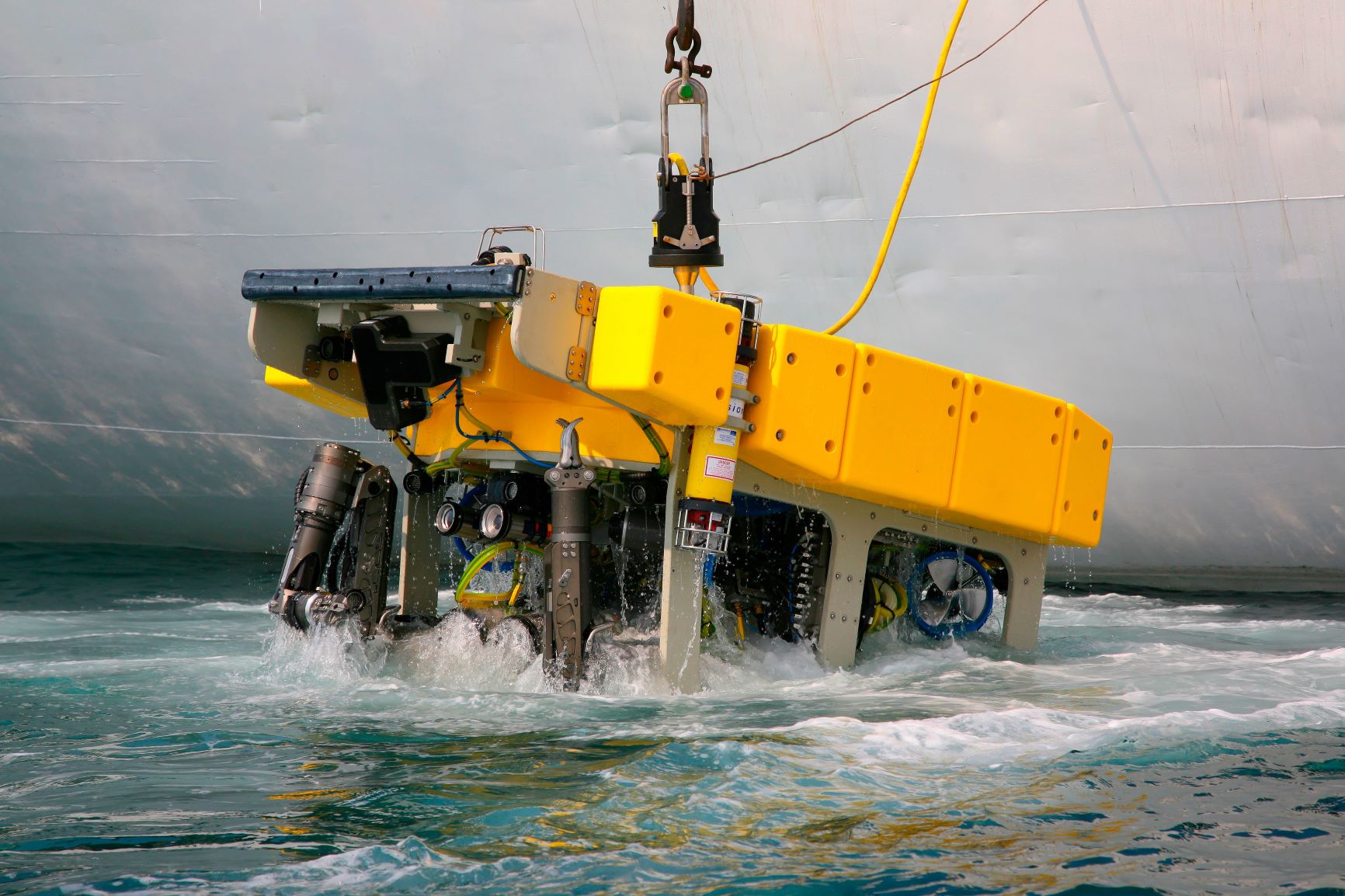By Vincent Mansour, Souriau North America Product Manager for marine products
With the development of networks and increased interconnectivity, improved and innovative technologies are showing promising signs for areas such as ocean monitoring, especially in the current environmental, economic and political context.
At present, most marine monitoring technologies can be used in a wide variety of applications and depend on tools and equipment that have not changed significantly in the past few decades. However, a new wave of innovation is pushing the envelope of what is currently possible and promises exciting opportunities to refine and improve the information we are able to collect, as well as deliver more powerful analysis capabilities.
Research vessels
Research vessels are the cornerstone of marine monitoring activities. They are usually equipped with a range of tools allowing them to evaluate and track fisheries’ activities, water quality, sea-bed mapping and sampling, among others. Increasingly, we are seeing marine vessels taking on the role of launch-pads for remotely-operated and autonomous marine vehicles, which means having extra capabilities on board, such as charging stations for untethered devices or power delivery systems for tethered devices, as well as command and control centres. However, sophisticated equipment and growing data collection lead to a need for higher performance interconnect systems such as fibre optics, allowing for high-speed data transfers. This in turn is usually requires more electrical current to power an increasing number of components and more powerful propulsion systems.
ROVs
Remotely-operated vehicles, or ROVs, provide an exciting opportunity to gather more and detailed data about our oceans, especially in areas that are difficult to access. Autonomous underwater vehicles (AUVs) are the next-generation ROVs with a more advanced propulsion system and extended autonomy, making them ideal for applications such as sea-bed mapping and locating wrecks.
This type vehicles however present serious engineering challenges, as they operate in widely varying harsh environments such as saltwater, cold temperatures and UV exposure. They are particularly prone to corrosion as they are constantly submerged and surfaced and are constantly subjected to different pressure levels as they repeatedly dive and surface.

Smart buoys
Smart buoys are also becoming an area of focus for marine monitoring; they are particularly promising thanks to innovation in communications networks.
Compared to research vessels and ROVs, smart buoys are cheaper to use and maintain, yet provide a wealth of data including temperature, pressure, salinity, oxygen density, wind direction, and more. Such data is of significant value to a variety of applications, including ocean monitoring but also fish farms, coral reefs and pollution monitoring.
The buoys’ functionalities largely depend on their sensors. Biogeochemical sensors deliver data about water quality and wildlife monitoring, but if the buoys include geolocation and real-time communication technologies, they can be used to create zones to monitor and alert administrators of certain situations. This could be a safety zone around a beach where boat access is restricted, for example; buoys can pick up a signal that a boat has entered the zone and send out an alert to notify the safety guards to act immediately.
Wave data is another field increasingly being studied, particularly in early-warning systems to anticipate potential flooding or high tides. Wave movements allow scientists to model forecasts of coastal flooding and are used by engineers designing coastal sea defences and offshore structures.
The common denominator in all these applications is the need for advanced electrical and electronic systems that can withstand the unique and tough environment of marine exposure, and that can deliver high power and high speed. The need for ultra-reliability is also crucial, as these systems are generally used in areas that are difficult to access, whether it’s a ROV 200m under water or a research vessel in the middle of the ocean. It is for these reasons that manufacturers of marine equipment will need to look for a high performance, high reliability specialist to deliver bespoke solutions.

Fit for purpose
Interestingly, just because a connector is watertight at great depths it doesn’t mean it will be equally so in shallow water. The watertight design has to consider the pressure exerted on the seams, and hence the immersion depth. Manufacturers of shallow water immersible equipment have to confront problems of sealing, contact corrosion and connector installation, and immersible connectors have to meet specific mechanical and chemical constraints.
Souriau offers a wide variety of connectors for submarines, oceanography, marine renewable energies and the oil industry, and has recently introduced a range of harnesses and connectors designed for shallow water immersible equipment. The range is called SWIM (Shallow Water Immersion), where the plug is screwed into the receptacle to lock both parts together, and two O-rings at the mating interface ensure the connection stays watertight even at low pressure. Manufactured in thermoplastic material, SWIM connectors are lightweight and resistant to corrosion, cathodic delamination and UV. The screw mating and coding pins make it easy to mate the plug with the receptacle, regardless of pin numbers.
SWIM half-harnesses are available in two housing sizes and 13 contact arrangements, in lengths from 1 to 10 metres, with cable connector over-mouldings that can be straight or angled at 90°. Specific harnesses are also available on request.
SWIM harnesses ensure secure connections in depth applications to 300m. They perfectly match the requirements of surface drone applications. These drones are used for marine mammal research missions, oil exploration or military-type applications such as maritime surveillance. SWIM harnesses also meet the needs of meteorological-oceanographic buoys, OCROVs (Remotely Operated Underwater Observation Robots) and a wide variety of equipment integrating sensors (hydrophones, temperature, salinity, etc.) and electronic devices.










